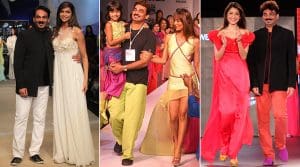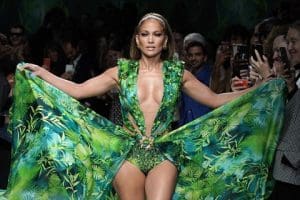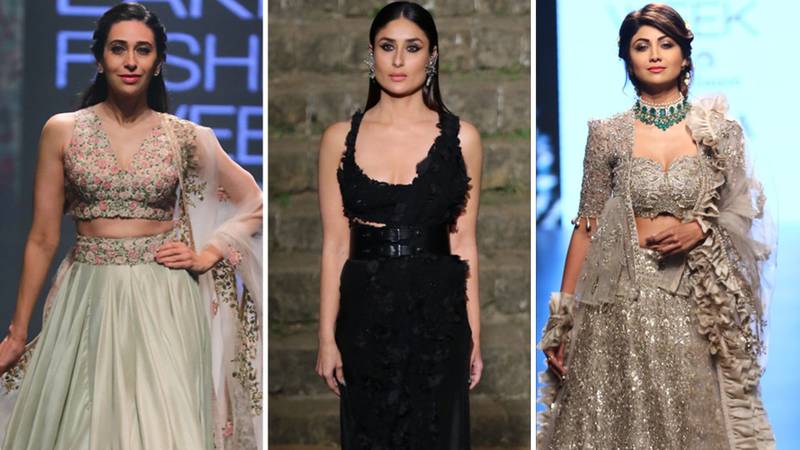Studying in the USA and France, fashion designers were taught to refer to the final garment in a show as the finalé dress. In the late 1980s and well into the ’90s, the finalé was always a bridal dress. By the time the millennium changed, a bridal dress as a finalé seemed archaic. Something else had to appear. Something we all now know as the showstopper.
Stars and their styles

Wendell Rodricks kicked off the showstopper trend by having Malaika Arora to sport the finalé garment at the Lakmé India Fashion Week, 2004
After that show, many designers sought stars to close their own events. Sometimes the star appeared in the show if she represented a brand: Aishwarya Rai for Longines, Deepika Padukone for Fiama Di Wills, Kareena Kapoor for Lakmé, Kangana Ranaut for Liva. Between the year 2000 and now, assorted stars of varying degrees almost always closed a show. And by the time Madhur Bhandarkar released the film Fashion, in 2008 for which Priyanka Chopra and Kangana Ranaut walked away with the best actress and best supporting actress awards, the entire nation knew the word ‘Showstopper.’
While most designers detest the word showstopper, event managers and fashion weeks depend on the Showstopper Syndrome to get media eyeballs. It helps them bring in sponsors. In fact, sponsors blatantly ask, “Who are the showstoppers?”
The debate that rages even today is whether fashion needs films or vice versa. The truth is, both feed off each other. And not just in India. When was the last time we saw a model on Anna Wintour’s Vogue covers? For 10 months out of 12, Vogue cover models are Hollywood stars. The remaining two months feature supermodels with star status.

When Jennifer Lopez walked for Versace wearing a green palm print swimsuit gown, the press never called her showstopper!
When beauty queens Aishwarya Rai and Susmita Sen entered the Hindi film industry in 1995, they took with them their favourite designers, stylists and make-up artists. After their entry and success, the lines of fashion and film were blurred forever. Today, fashion designers rush to do films and woo stars to walk as showstoppers. Stars in turn call up designers to ask to walk at fashion weeks because of the huge media eyeballs the event gets. There are so many events today, that the red carpet is vital: the media thrives on them. Photographers earn their living from red carpets. They fill both fashion and film pages, TV time and websites. Fashion bloggers critique every red carpet event, every star and every fashion garment, viewing them with a microscope.
These days the showstopper and red carpet have got to a ridiculous level. A red carpet with brand signage appears when Prince Harry and Princess Kate are at an event in Mumbai. Ditto for a Justin Trudeau visit. Weddings are not spared either. Instead of arriving at a wedding to bless the bridal couple, the invitees are focused on what they should wear on the wedding red carpet outside the venue.
Between the media and the public on social media, showstoppers and ‘worst dressed’ are selected from among those walking the red carpet. With social media, everyone’s clothes are a target from vicious comment. On Instagram, an anonymous account called Diet Sabya has become a hit for pointing out copycats on the red carpet. It’s all more entertainment…and eyeballs!
Will the Showstopper Syndrome die out? In a country obsessed with stars, glamour, film and cricket, perish the thought. There is too much money riding on film and fashion to take the showstopper out of fashion. When Jennifer Lopez walked at the end of the Versace show last month, wearing her green palm print swimsuit gown, the press and public worldwide never called her a showstopper. But this is India. We gave ourselves the word after the millennium and it has stuck like superglue. Hate it, love it, refuse it, embrace it, lump it…the Showstopper Syndrome has gone viral and it is here to stay.

